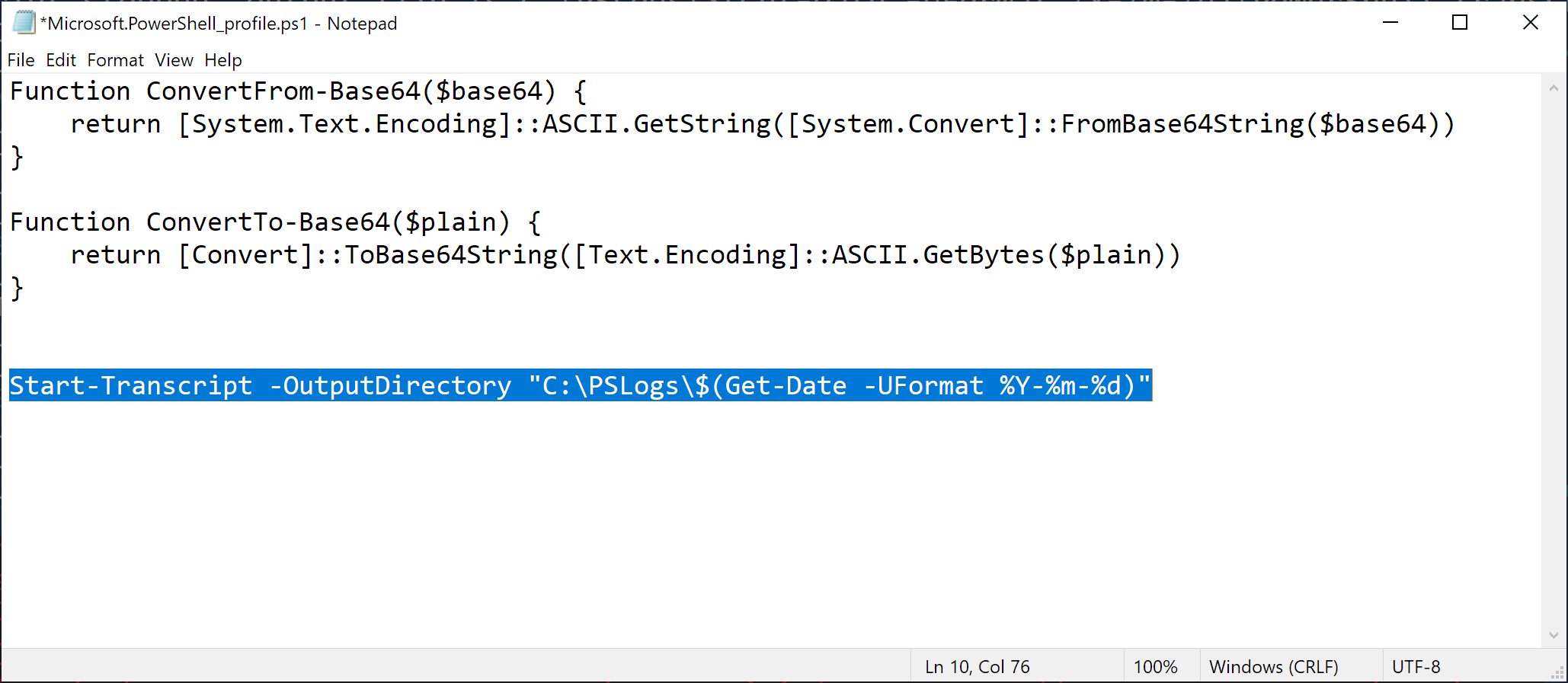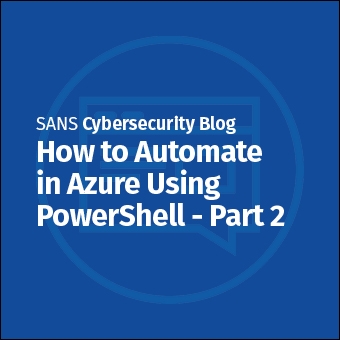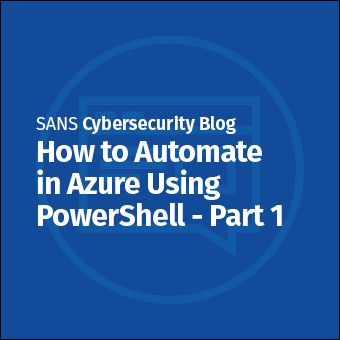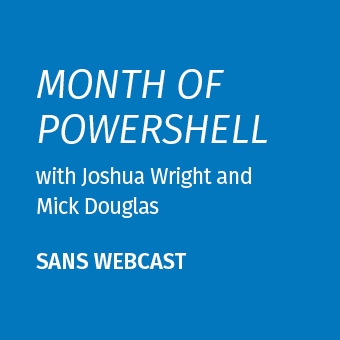Ever been frustrated trying to find something lost in your shell history?
I know a lot of penetration testers who do all of their testing up-front, and then work on the report at the end of the engagement. I think this is a mistake. When I'm working on a pen test, I work on my report every day. I think this improves the quality of my report, since I'm capturing the report information while I'm working, it reduces the ugh reporting phase of the engagement because I get the report done a little bit at a time, and it improves accuracy since I'm capturing details in the report while (or right after) I'm completing the actions.
Still, sometimes I need to go back to review my work to compare against newly discovered details, as a collaboration effort with people on my team, and to share verbose details of activities with a customer for accountability. Fortunately, PowerShell make this easy with the Start-Transcript cmdlet. From the documentation:
The Start-Transcript cmdlet creates a record of all or part of a PowerShell session to a text file. The transcript includes all command that the user types and all output that appears on the console. Microsoft
Running Start-Transcript with no arguments will create a text file in the current user Documents directory. By default it will use a generated file name that starts with PowerShell_transcript, the workstation name, a random string, and the date/time:
PS C:\Users\Sec504> Start-Transcript Transcript started, output file is C:\Users\Sec504\Documents\PowerShell_transcript.SEC504STUDENT.NWUY6V8q.20220716121258.txt PS C:\Users\Sec504>
All commands you run in the session are logged, as well as the output from the commands. This includes not just PowerShell cmdlet, but any other command-line input and output. For example, with the transcript running I might use Netcat to test a service on a report system and grab a banner:
PS C:\Users\Sec504> nc -vvvw3z 10.10.75.1 22 10.10.75.1: inverse host lookup failed: h_errno 11004: NO_DATA (UNKNOWN) [10.10.75.1] 22 (ssh) open SSH-2.0-OpenSSH_7.6p1 Ubuntu-4ubuntu0.3 net timeout sent 0, rcvd 41: NOTSOCK
The nc command, the arguments, and the output are automatically recorded in the PowerShell transcript. I can stop the transcript using Stop-Transcript and inspect the captured data using Get-Content:
PS C:\Users\Sec504> Stop-Transcript Transcript stopped, output file is C:\Users\Sec504\Documents\PowerShell_transcript.SEC504STUDENT.NWUY6V8q.20220716121258.txt PS C:\Users\Sec504> Get-Content C:\Users\Sec504\Documents\PowerShell_transcript.SEC504STUDENT.NWUY6V8q.20220716121258.txt ********************** Windows PowerShell transcript start Start time: 20220716121258 Username: SEC504STUDENT\Sec504 RunAs User: SEC504STUDENT\Sec504 Configuration Name: Machine: SEC504STUDENT (Microsoft Windows NT 10.0.19044.0) Host Application: C:\Windows\System32\WindowsPowerShell\v1.0\powershell.exe Process ID: 1676 PSVersion: 5.1.19041.1682 PSEdition: Desktop PSCompatibleVersions: 1.0, 2.0, 3.0, 4.0, 5.0, 5.1.19041.1682 BuildVersion: 10.0.19041.1682 CLRVersion: 4.0.30319.42000 WSManStackVersion: 3.0 PSRemotingProtocolVersion: 2.3 SerializationVersion: 1.1.0.1 ********************** Transcript started, output file is C:\Users\Sec504\Documents\PowerShell_transcript.SEC504STUDENT.NWUY6V8q.20220716121258.txt PS C:\Users\Sec504> nc -vvvw3z 10.10.75.1 22 10.10.75.1: inverse host lookup failed: h_errno 11004: NO_DATA (UNKNOWN) [10.10.75.1] 22 (ssh) open SSH-2.0-OpenSSH_7.6p1 Ubuntu-4ubuntu0.3 net timeout sent 0, rcvd 41: NOTSOCK PS C:\Users\Sec504> Stop-Transcript ********************** Windows PowerShell transcript end End time: 20220716121827 ********************** PS C:\Users\Sec504>
In addition to the Netcat command and the associated output, I also see header and footer information to indicate information about the PowerShell session and the system I'm using, as well as the time I stopped the transcript. Nice!
Personally, I would probably forget to consistently run Start-Transcript for each new PowerShell session, so I make it happen automatically in my PowerShell profile (see the amazing article by Mick Douglas The Power of $PROFILE for tips on getting your PowerShell profile setup). Here are my goals for using Start-Transcript in my day-to-day activities:
- Start transcribing automatically with no additional interaction other than starting a PowerShell session
- Each PowerShell session should be tracked as an individual file
- Transcript files should be grouped by day in a directory named YYYY-mm-dd (e.g., 2022-07-22) under a named directory
- Transcript files should include the date and time information in the file name
- Transcript files should not overwrite (clobber) each other with duplicate file names for different sessions
Fortunately, PowerShell handles most of this for us automatically with the default transcript file naming convention. We can further organize the transcript files into unique directories with the Start-Transcript -OutputDirectory argument and Get-Date formatted to return the current date in YYYY-mm-dd format:
PS C:\Users\Sec504> Start-Transcript -OutputDirectory "C:\PSLogs\$(Get-Date -UFormat %Y-%m-%d)" Transcript started, output file is C:\PSLogs\2022-07-16\PowerShell_transcript.SEC504STUDENT.8c8DwbXh.20220716120159.txt PS C:\Users\Sec504>
By specifying -OutputDirectory, PowerShell will record the transcript file in the target directory (C:\PSLogs\2022-07-16, in this example). This limits the number of files in a given directory, and it makes it easy to go back to a specific day of transcript files. The default transcript file name convention satisfies the rest of the requirements. The only remaining step is to add this line to the PowerShell profile:
Start-Transcript -OutputDirectory `"C:\PSLogs\$(Get-Date -UFormat %Y-%m-%d)"
The easiest way to do this is to open the PowerShell profile with Notepad and paste in the line:
PS C:\Users\Sec504> notepad $profile PS C:\Users\Sec504>

The best part of adding Start-Transcript to your profile in this manner is that it gets out of your way. When you start a new PowerShell session, you will see a reminder that the transcript is running, but otherwise nothing else changes for how you work with PowerShell.
Windows PowerShell Copyright (C) Microsoft Corporation. All rights reserved. Try the new cross-platform PowerShell https://aka.ms/pscore6 Transcript started, output file is C:\PSLogs\2022-07-16\PowerShell_transcript.SEC504STUDENT.EArWgSeO.20220716125451.txt PS C:\Users\Sec504>
At the end of an engagement, I zip up the transcript files and stash with somewhere until the customer data retention period expires. I feel better knowing that I have those activities saved, and have a complete data set for all the customer engagement activities, whether it is for a pentest, or an incident response engagement, or any other sensitive analysis work!
That's it for today, time to get back to reporting. 😬
-Joshua Wright
Return to Getting Started With PowerShell
Joshua Wright is the author of SANS SEC504: Hacker Tools, Techniques, and Incident Handling, a faculty fellow for the SANS Institute, and a senior technical director at Counter Hack.




